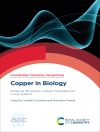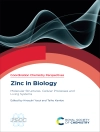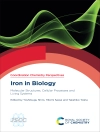Since its discovery in 2004, graphene has been a great sensation due to its unique structure and unusual properties, and it has only taken
6 years for a Noble Prize to be awarded for the field of graphene research. This monograph gives a well-balanced overview on all areas of
scientific interest surrounding this fascinating nanocarbon. In one handy volume it offers comprehensive coverage of the topic, including
chemical, materials science, nanoscience, physics, engineering, life science, and potential applications. Other graphene-like, inorganic layered materials are also discussed.
Edited by two highly honored scientists, this is an invaluable companion for inorganic, organic, and physical chemists, materials scientists,
and physicists.
From the Contents:
* Synthesis, Characterization, and Selected Properties of Graphene
* Understanding Graphene via Raman Scattering
* Physics of Quanta and Quantum Fields in Graphene
* Graphene and Graphene-Oxide-Based Materials for Electrochemical Energy Systems
* Heterogeneous Catalysis by Metal Nanoparticles supported on Graphene
* Graphenes in Supramolecular Gels and in Biological Systems
and many more
قائمة المحتويات
PREFACE
SYNTHESIS, CHARACTERIZATION, AND SELECTED PROPERTIES OF GRAPHENE
Introduction
Synthesis of Single-Layer and Few-Layered Graphenes
Synthesis of Graphene Nanoribbons
Selected Properties
Inorganic Graphene Analogs
UNDERSTANDING GRAPHENE VIA RAMAN SCATTERING
Introduction
Atomic Structure and Electronic Structure of Graphene
Phonons and Raman Modes in Graphene
Layer Dependence of Raman Spectra
Phonon Renormalization Due to Electron and Hole Doping of Graphene
Raman Spectroscopy of Graphene Edges and Graphene Nanoribbons
Effect of Disorder on the Raman Spectrum of Graphene
Raman Spectroscopy of Graphene under Strain
Temperature and Pressure Dependence of Raman Modes in Graphene as Nanometrological Tools
Tip-Enhanced Raman Spectroscopy of Graphene Layers
Conclusions
PHYSICS OF QUANTA AND QUANTUM FIELDS IN GRAPHENE
Introduction
Dirac Theory in 3 + 1 Dimensions: A Review
Band Structure of Graphene: Massless Chiral Dirac Electrons in 2 + 1 Dimensions
Anomaly – A Brief Introduction
Graphene and 2 + 1-Dimensional Parity Anomaly
Zitterbewegung
Klein Paradox
Relativistic-Type Effects and Vacuum Collapse in Graphene in Crossed Electric and Magnetic Fields
Prediction of Spin-1 Quanta from Resonating Valence Bond Correlations
Majorana Zero Mode from Two-Channel Kondo Effect in Graphene
Lattice Deformation as Gauge Fields
Summary
MAGNETISM OF NANOGRAPHENE
Introduction
Theoretical Background of Magnetism in Nanographene and Graphene Edges
Experimental Approach to Magnetism of Nanographene
Magnetic Phenomena Arising in the Interaction with Guest Molecules in Nanographene-Based Nanoporous Carbon
Summary
PHYSICS OF ELECTRICAL NOISE IN GRAPHENE
Introduction
Flicker Noise or `’1/f ‘ Noise in Electrical Conductivity of Graphene
Noise in Quantum Transport in Graphene at Low Temperature
Quantum-Confined Graphene
Conclusions and Outlook
SUSPENDED GRAPHENE DEVICES FOR NANOELECTROMECHANICS AND FOR THE STUDY OF QUANTUM HALL EFFECT
Introduction
Quantum Hall Effect in Graphene
Fabrication of Suspended Graphene Devices
Nanoelectromechanics Using Suspended Graphene Devices
Using Suspended Graphene NEMS Devices to Measure Thermal Expansion of Graphene
High-Mobility Suspended Graphene Devices to Study Quantum Hall Effect
ELECTRONIC AND MAGNETIC PROPERTIES OF PATTERNED NANORIBBONS: A DETAILED COMPUTATIONAL STUDY
Introduction
Experimental Results
Theory of GNRs
Hydrogenation at the Edges
Novel Properties
Outlook
STONE-WALES DEFECTS IN GRAPHENE AND RELATED TWO-DIMENSIONAL NANOMATERIALS
Introduction
Computational Methods
Graphene: Stone-Wales (SW) Defects
C1-x(BN)x/2: C-BN Interfaces
Two-Dimensional Mo S2 and Mo Se2
Summary
GRAPHENE AND GRAPHENE-OXIDE-BASED MATERIALS FOR ELECTROCHEMICAL ENERGY SYSTEMS
Introduction
Graphene-Based Materials for Fuel Cells
Graphene-Based Supercapacitors
Graphene in Batteries
Conclusions and Future Perspectives
HETEROGENEOUS CATALYSIS BY METAL NANOPARTICLES SUPPORTED ON GRAPHENE
Introduction
Synthesis of Graphene and Metal Nanoparticles Supported on Graphene
Pd/Graphene Heterogeneous Catalysts for Carbon-Carbon Cross-Coupling Reactions
CO Oxidation by Transition-Metal/Metal-Oxide Nanoparticles Supported on Graphene
Conclusions and Outlook
GRAPHENES IN SUPRAMOLECULAR GELS AND IN BIOLOGICAL SYSTEMS
Introduction
Toward the Gelation of GO
Polymer-Assisted Formation of Multifunctional Graphene Gels
Graphene Aerogels
Hydrogel and Organogel as the Host for the Incorporation of Graphene
Biological Applications Involving Graphene
Conclusions and Future Directions
BIOMEDICAL APPLICATIONS OF GRAPHENE: OPPORTUNITIES AND CHALLENGES
Introduction
Summary of Physical and Chemical Properties of Graphene
Cellular Uptake, Biodistribution, and Clearance
Toxicity of Graphene
Mitigation of Toxicity by Surface Modifications
In vivo Toxicity
Potential Application Areas: Opportunities
Conclusions
INDEX
عن المؤلف
C.N.R. Rao obtained his Ph.D. from Purdue University and D.Sc. from Mysore University as well as 53 honorary doctorate degrees from various universities. C.N.R. Rao is National Research Professor & Linus Pauling Research Professor at Jawaharlal Nehru Centre for Advanced Scientific Research and Honorary Professor at the Indian Institute of Science. His main research interests are in solid state and materials chemistry including nanomaterials. He is a member of numerous science academies worldwide and has received many national and international honors. In particular, he is the recipient of the Dan David Prize as well as the Illy Trieste Science Prize for Materials research besides the August von Wilhelm Hoffmann medal from the German Chemical Society. He has published over 1400 research papers and 45 books.
A.K. Sood is Professor in the Department of Physics at the Indian Institute of Science, Bangalore. He holds the prestigious Bhatnagar Chair of CSIR and is currently the President of the Indian Academy of Sciences. His research interests include physics of nano-systems like nanotubes and graphene and physics of soft condensed matter. He has published more than 300 papers in refereed international journals and holds a few international patents. His work has been recognized by way of many honors and awards. These include Fellowships of The Indian National Science Academy, The National Academy of Sciences, India and The World Academy of Sciences (TWAS), Shanti Swaroop Bhatnagar Prize and National Award in Nanoscience and Nanotechnology by The Department of Science and Technology of India.












